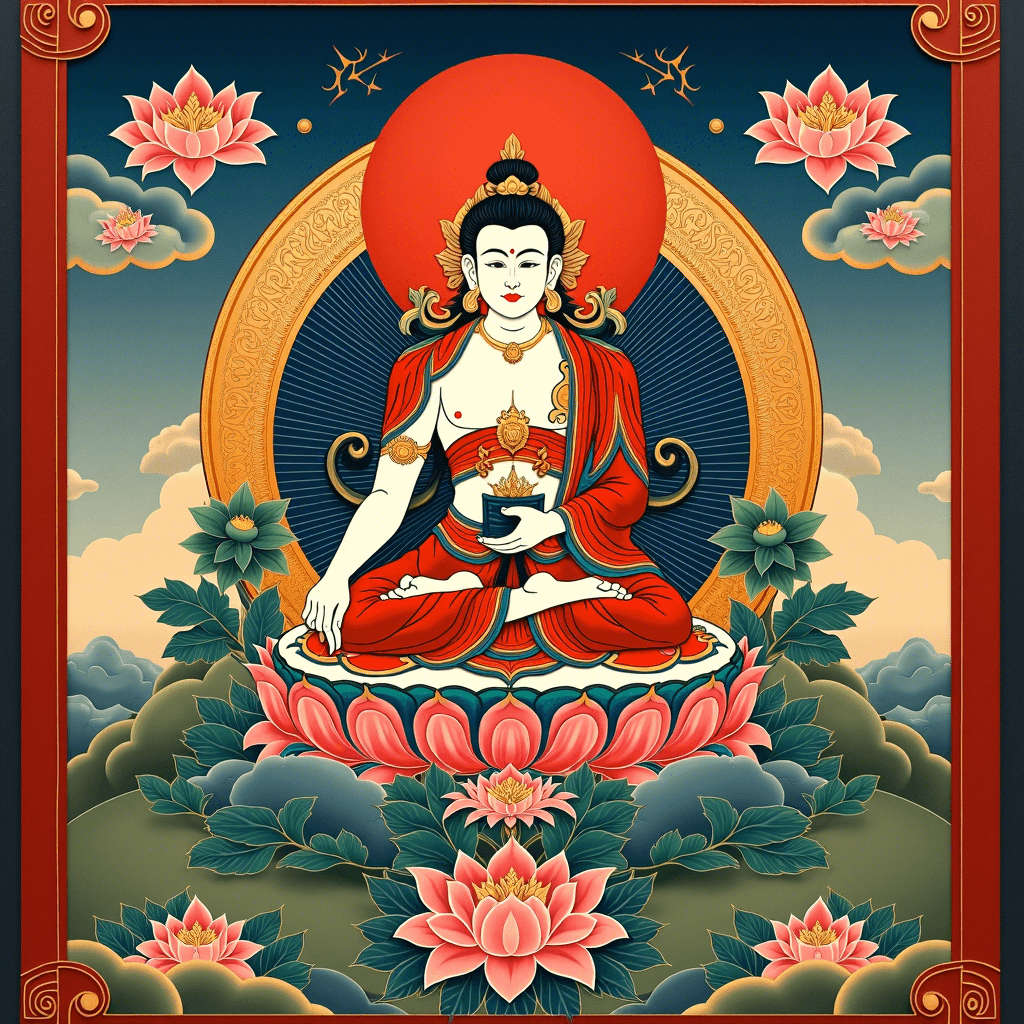
Tibetan Thangka
Traditional Tibetan Buddhist art form featuring detailed paintings on cloth, often depicting deities, mandalas, and spiritual scenes for meditation and teaching.
Overview
Origin
Tibet
Historical Period
7th century onwards
Cultural Significance
Thangka paintings are sacred art forms in Tibetan Buddhism, used as meditation aids, teaching tools, and objects of devotion, often depicting deities and mandalas.

Historical Timeline
7th century
Introduction with Buddhism to Tibet
13th-14th century
Development of major painting schools
17th century
Establishment of Menris style
Techniques
Painting on cotton or silk with mineral pigments
Detailed brushwork with fine lines
Use of vibrant colors and gold for divine figures
Intricate borders with symbolic motifs
Cultural Context
Thangka paintings are sacred art forms in Tibetan Buddhism, used as meditation aids, teaching tools, and objects of devotion, often depicting deities and mandalas.
Did You Know?
Thangka paintings are often rolled up for storage and transport, making them portable tools for teaching Buddhist principles in remote Himalayan regions.